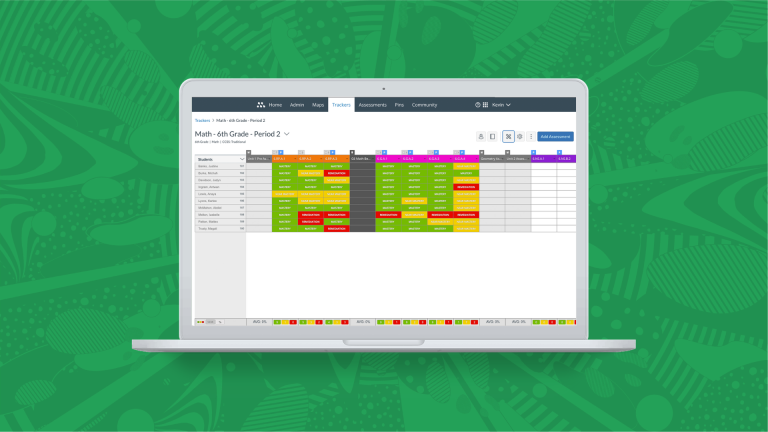
In the wake of disrupted learning, educators are finding the right way to meet students where they are, and curricula have the potential to make a significant impact.
The right curriculum accomplishes one mission: to help every student learn. Systematic literacy curriculum adjustments - like those in New York City - speak to this mission.
However, districts may face several challenges during a curriculum change:
- Granting access to data that clarify the impact of the curriculum
- Providing educators with appropriate, actionable professional development
- Facilitating PLC collaboration to ensure smooth implementation
An assessment management system (AMS) unites administrators, teachers, and students and can help steady the ship during a transition. With the right AMS, districts can:
- Analyze the impact on student performance
- Improve instructional efficacy
- Bring teachers together to map curriculum implementation
- Establishes consistent assessment practices
Read on to learn how an AMS - like Mastery Connect - can help identify student needs and empower educators to make data-driven decisions that positively impact learning.
1. Analyze the Impact on Student Performance
Districts want to know the impact their new curriculum is making, and data can tell that story. Still, administrators need to understand how schools are performing. In the case of New York City, teachers need to know which vital literacy skills students have mastered and where they still need support. Getting data often takes time if teachers have to grade assessments manually. Mastery Connect allows administrators and teachers to quickly and comprehensively see how schools, classes, and individual students track toward standard mastery. Students not yet at mastery could give a teacher ideas for intervention or inspire broader instructional adjustments. An AMS built for standards-based grading shows where students are today and takes the guesswork out of meeting student needs.
2. Improves Instructional Efficacy
Every educator is part of a team, and teams must work together - even when time is scarce. With the data from an AMS, teachers can look at where their students perform compared to each other and other classrooms. Knowing where each student performs, they can tailor their lessons and activities to student needs and continually hone their practice to ensure they meet DOE standards. This level of personalization is essential for developing learners of the 21st century and enables differentiated instruction.
3. Brings Teachers Together to Map Curriculum Implementation
Educators must stay connected - especially when new instructional material is rolled out. An assessment management system that allows for a curriculum map lets instructional leaders and teachers identify the standards for each course. An intuitive tool that clarifies planning can build teacher trust and ease anxieties about what to teach and when to guide PLC work.Teachers can collaborate to create common assessments, share resources, and learn from successful classrooms. Together teachers can identify whose strategies are working for each standard and who needs additional support.
4. Establishes Consistent Assessment Practices
With a standardized assessment approach, it becomes easier to gauge the effectiveness of the new curriculum and make data-driven decisions. An AMS helps schools establish consistency at scale. With an AMS, teachers can create and administer consistent assessments across classrooms, grade levels, and schools. This consistency allows for fair, equitable grading and serves as a reliable measurement of student progress.
Connections for Student Success
No classroom is an island, and curriculums, when paired with an assessment management system, ensure every classroom stays connected.
Educators can use data to analyze student performance, improve instructional efficacy, and collaborate with colleagues to meet students where they are. Learn more about choosing an AMS and Mastery Connect's impact in supporting students on the road to literacy.



